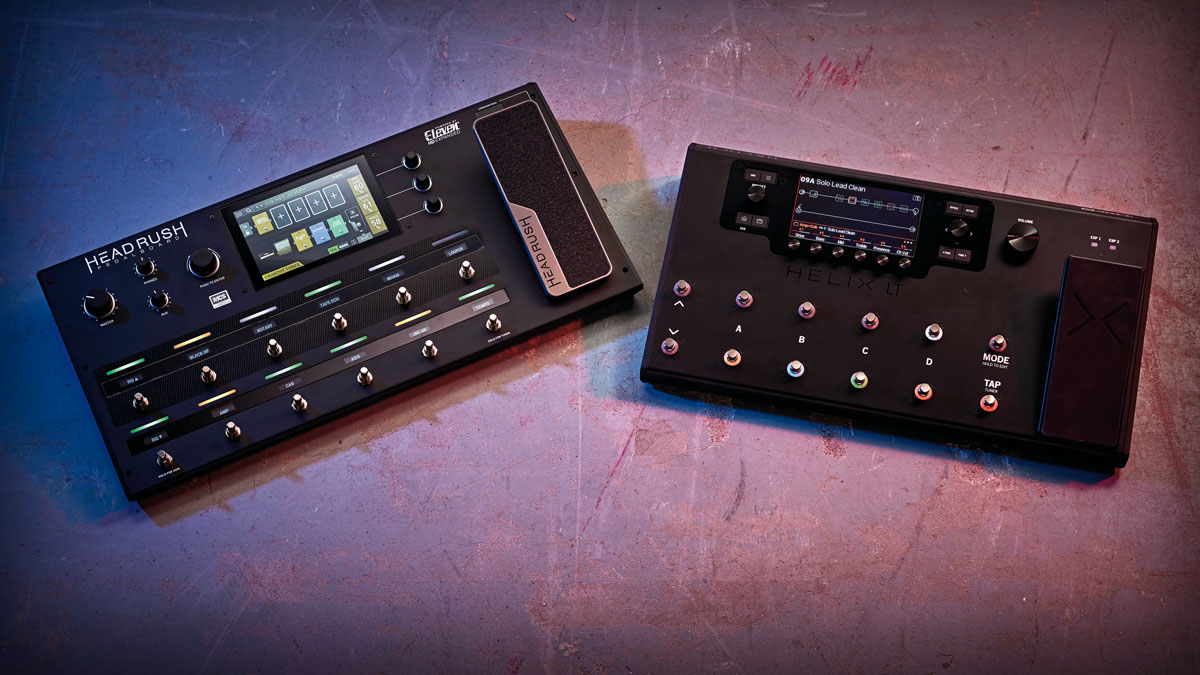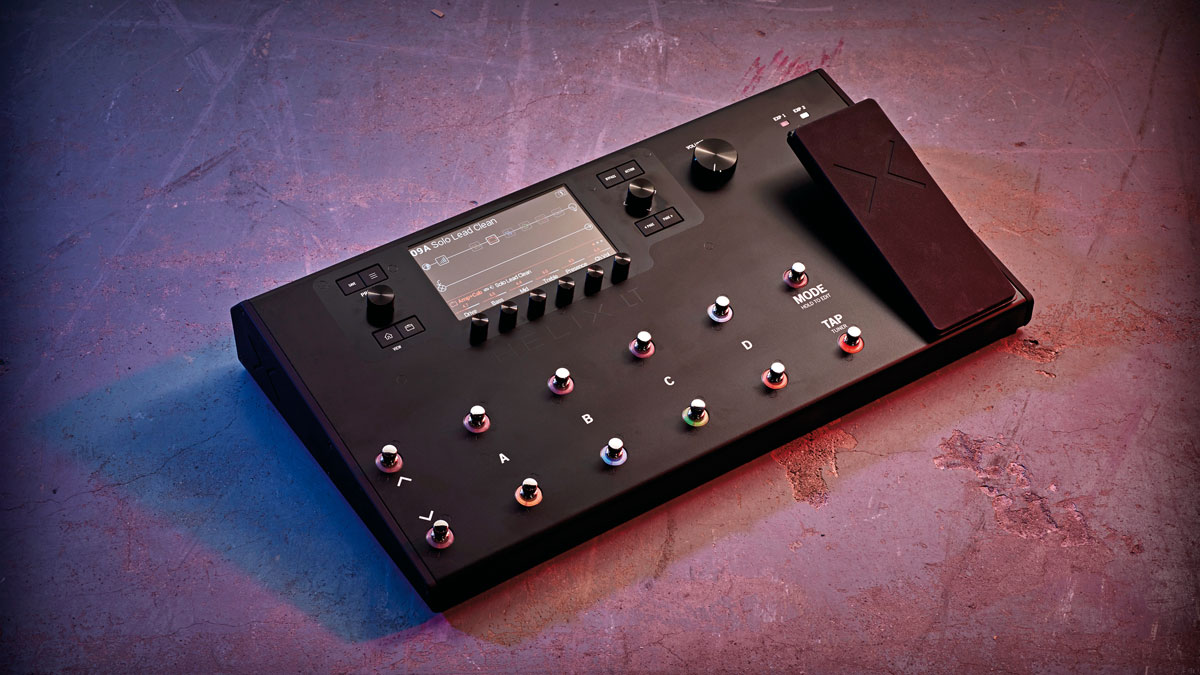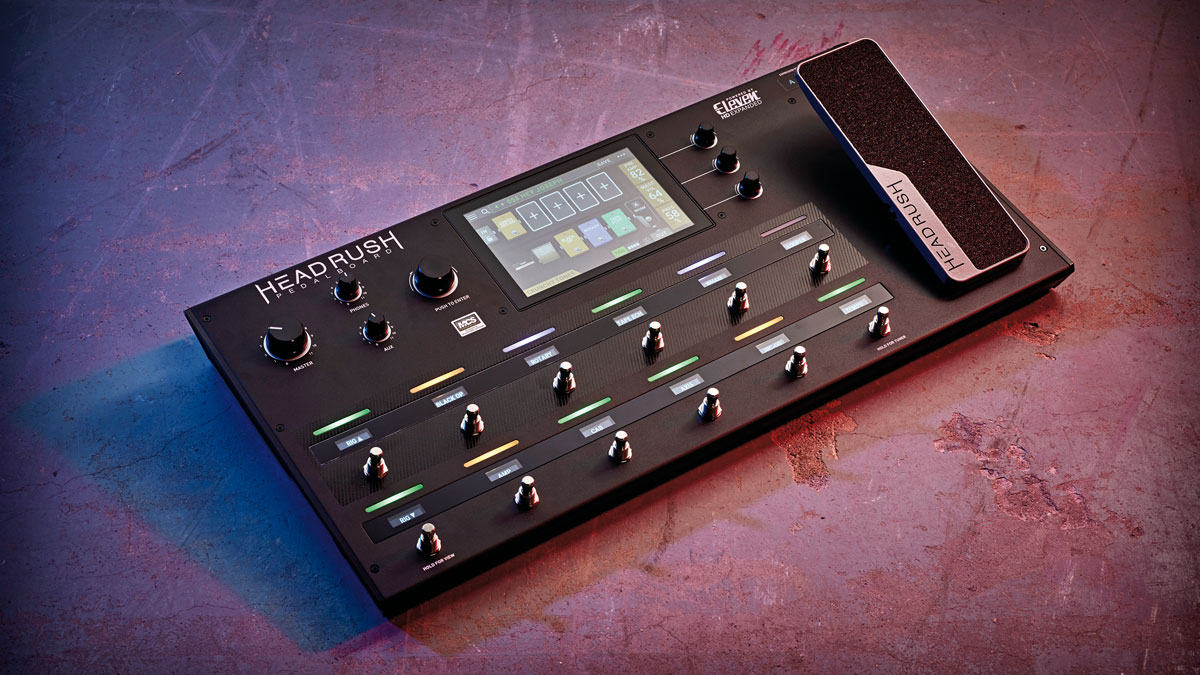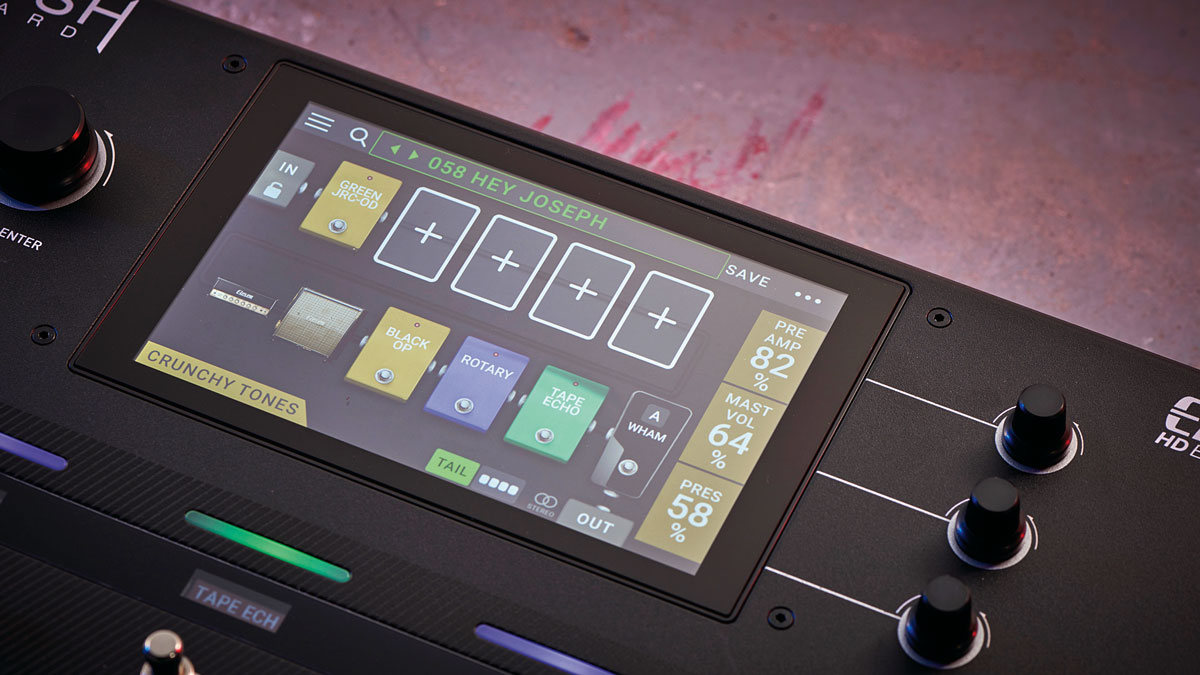Head to head review: Line 6 Helix LT vs HeadRush Pedalboard
Have these floor-pedal multi-effects units nailed modelling at a realistic price point?

For some time, professional players have been trading in their valve rigs for Axe-Fx and Kemper units that rely on amp, cabinet and microphone modelling to deliver consistent stage and studio sounds.
Not only that, but with a wealth of guitar effects on tap and many otherwise difficult signal routing combinations on offer, these have allowed a revolution in dynamic and timbral shifts to occur in certain types of music, with no pedal tap-dancing or human error in sight.
Progressive metal titans like Periphery and Tesseract are able to turn on a dime from heavy sections to atmospheric passages courtesy of their modelling rigs. This is all very well but until now the price point of these setups has been substantial.
With the Helix, Line 6 shook up the market by leap frogging from its entry-level offerings to take on the modelling titans at the top and the LT offers a new, wallet-friendly incarnation of that highly praised unit.
The HeadRush Pedalboard, meanwhile, is a new hardware offering featuring tech from the makers of Eleven Rack, who know a thing or two about tones for guitarists.
These units seek to sell themselves on their ability to replace real amplifiers, although their range of effects is not to be sniffed at either. So is it time to throw out your amp, cab and pedals? Let’s find out…

Line 6 Helix LT
Line 6 modelling? We’ve been here before...
Line 6 is the company most associated with consumer-grade modelling. Some efforts have aged better than others, many have become workhorses and benchmarks for the industry, like the DL4 delay and looper. The Helix falls into the latter category.
How easy is it to program?
Most of the functionality of the unit can be accessed with a few footswitch presses and a combination of the joystick and the six parameter controls underneath the screen. Although more complex functionality will require a bit of trial-and-error, or indeed reading the manual, there’s also a helpful photo cheat-sheet included in the box that covers the more common functionality.
The clean amps are fantastic and the JTM 45-style British amp was a particular favourite at mid-gain settings
How does the user interface stack up?
The pixel screen is crisp and clear and, crucially, Line 6 seems to have spent a lot of time thinking carefully about how the interaction with blocks should work for the player. Navigating them and assigning routing for simple setups is a breeze, while power users will quickly suss out the advanced options on offer. The colour coding from screen to footswitches is clear and memorable once learned and the ‘tap to select, press to actuate’ double-function footswitches speed up editing and feel solid underfoot.
How good are the effects and amps?
The clean amps are fantastic and the JTM45-style British amp was a particular favourite at mid-gain settings. Roll the gain up, however, and there’s a bit of the ‘fizz’ traditionally associated with digital modelling. Tweaking the mic and cab settings can mitigate this somewhat and third party impulse responses (IRs) are also an option - Line 6 offers a free pack via its website, in fact.
Nevertheless, stereo setups are a breeze and a lot of fun can be had with the arsenal of effects when run through these. Hours were lost during testing to a Roland Jazz Chorus and JTM45 setup and the ping-pong delay in this context is nothing short of a revelation.
Can you use it to record?
Besides the usual XLR outs, there’s also a USB option to use the Helix as an interface, DI and re-amp box.
Come on, there must be some negatives...
Some of the most interesting functionality lies in its deep integration with L6’s DT amp series and Variax guitars, for which there’s a dedicated input on the back of the unit. In that sense, you’re missing out on some features unless you have all the kit, which is a bit of a shame but unavoidable.
At a glance
Number of models: 62 amps, 37 cabs, 16 microphones, 104 effects
Key features: effects modelling, amp modelling, recording interface, expression pedal, Line 6 Variax and DT connectivity, 6.2” screen
Sockets: Input, 2x outputs, 2x XLR outputs, 2x send/return, headphones, digital out, Variax, MIDI in, MIDI out/thru, USB, expression pedal

HeadRush Pedalboard
Has HeadRush made anything like this before?
As it happens, yes, it has. The Eleven Rack was a standalone rack unit for guitar and effects processing that Avid released a few years back. It had a few issues, most notably that a floorboard and expression couldn’t be connected at the same time. These concerns have been taken on board, ahem, for this unit, and the results of the team's hard work are clear.
Isn’t this the same as the Eleven Rack then?
Well, unlike the Eleven Rack, there’s no bundled Pro Tools; this seems like a clear indication that this unit is primarily aimed at the gigging guitarist. In addition, it’s powered by the Eleven HD engine, which is an improvement on the original from the rack unit.
Under the hood, there are some similarities, but this ships with a wide array of amps and effects that are intended to be more than adequate for the end user to create their own patches without the need to dig into third party add-ons.
With the integrated 7” touchscreen, navigating patches, creating your own, assigning footswitches and modifying parameters is easy
How easy is it to program?
With the integrated 7” touchscreen, navigating patches, creating your own, assigning footswitches and modifying parameters is easy. There’s a slight black mark in that when paging up or down between your current active editing parameters the transitions can be a bit abrupt, but it’s a minor gripe.
How good are the effects?
The effects on the whole are pretty strong. The distortions in particular deserve a mention as they seem to preserve much of the harmonic complexity of the originals, and particularly when stacked into an already-dirty amp sound they deliver that rich, thick sustain that characterises a real tube amp breaking up.
Do the amps sound realistic?
A common problem for modelling amps has been the ‘fizz’ associated with trying to model a saturated amplifier sound. This isn’t present even on higher-gain patches and the closer you get to a clean amp sound, the more convincing it is. All your favourites are here, as well as some high-end options like Soldano, but we found ourselves sticking to classic Marshall and Fender sounds for the most part.
Can you use it to record?
Naturally. Using a USB cable, you can record directly into your DAW and send four channels in and out as well as stereo dry and wet, meaning you can cut down on cable clutter when recording at home.
At a glance
Number of models: 33 amps, 15 cabs, 10 microphones, 42 effects
Key features: Effects modelling, amp modelling, recording interface, expression pedal, scribble strip displays, 7” touchscreen
Connections: Input, stereo aux input, 2x outputs, 2x XLR outputs, phones output, send/return, MIDI in, MIDI out/thru, USB, expression pedal

Head to head
There’s more in common between these units than there are differences.
For live performance, both units boast a ‘setlist’ feature, allowing you to organise your patches into a scrollable order. The scribble strips on the HeadRush make this slightly more user-friendly.
Both have an assignable expression pedal and room for an expansion, which can take control of a parameter from an effect. This means you can have fun with delay-time warping, for example.
When editing parameters, the Helix LT is a clear winner: the six parameter knobs underneath the main screen mean you have more at your fingertips, which speeds up the process of editing or creating sounds.
Counter-intuitively, the Helix user interface is easier to work with, even without the touch screen of the HeadRush. The great strength of the HeadRush user interface is that it needs no description; it is easy to navigate, but as a result it feels like options are buried beneath a few presses where on the Helix the equivalent menu is a dedicated hardware button press away. It’s personal preference, but the Helix feels quicker to work with.
Both have an assignable expression pedal and room for an expansion, which can take control of a parameter from an effect
In terms of effects, it should come as no surprise that the Helix has the edge, which means it will integrate with a traditional amp setup better if you choose to not use the modelled amps on the unit.
The delays and modulations feel like updated versions of the patches from now-classic units like the DL4 delay, and the looper is snappy and intuitive to use. The stereo image of the effects is stellar, and setting up two virtual amps is simple. There’s even a couple of out there effects like pitch-shifted delays or sweep delays to keep the space cadets occupied.
The HeadRush effects feel a bit more prosaic, but there are standouts like the tape delay that could give not only the Helix, but other high-end effects like Strymon’s, a good run for their money.

Final verdict
The world of modelling is now fully grown up.
It’s commonplace to find records by small and touring bands that use fully modelled amplifiers - whether it be from a plug-in like Positive Grid’s BIAS, or a hardware rack unit like the Axe-Fx.
The tools might be different, but this change in attitude means not only that use of modelling will become more common, but that manufacturers will seek to deliver more options to consumers.
In some ways, this all started with the Line 6 POD, and so it seems appropriate that Line 6 is attempting to reclaim its seat at the big boys’ table. In any case, hardware is a different ball game to software and only the Helix LT of the two units featured here really seems to have effortlessly balanced the two halves of the equation.
If you’re after something that’s easy to get up-and-running with but not particularly interested in having the most lifelike amp sounds on the planet, then the Helix is the obvious choice. If amps matter to you more than effects, then go with the HeadRush, but remember that in both cases third-party IRs can be loaded to completely change the character of the amps.
HeadRush offers a couple of free Celestion IRs via its website, and Line 6 has the Allure pack available from its own, so you might not even have to purchase extras.
The bottom line is that either of these floorboards could provide a radical simplification of your rig if you’re a function, covers or bedroom player. Even with the amp modelling turned off, these compact units could replace a much more complicated pedalboard and run into your favourite amp, with no tonal compromise.
Best for effects: Line 6 Helix LT
5 out of 5
Best for amp modelling: HeadRush Pedalboard
4 out of 5
Alex Lynham is a gear obsessive who's been collecting and building modern and vintage equipment since he got his first Saturday job. Besides reviewing countless pedals for Total Guitar, he's written guides on how to build your first pedal, how to build a tube amp from a kit, and briefly went viral when he released a glitch delay pedal, the Atom Smasher.



